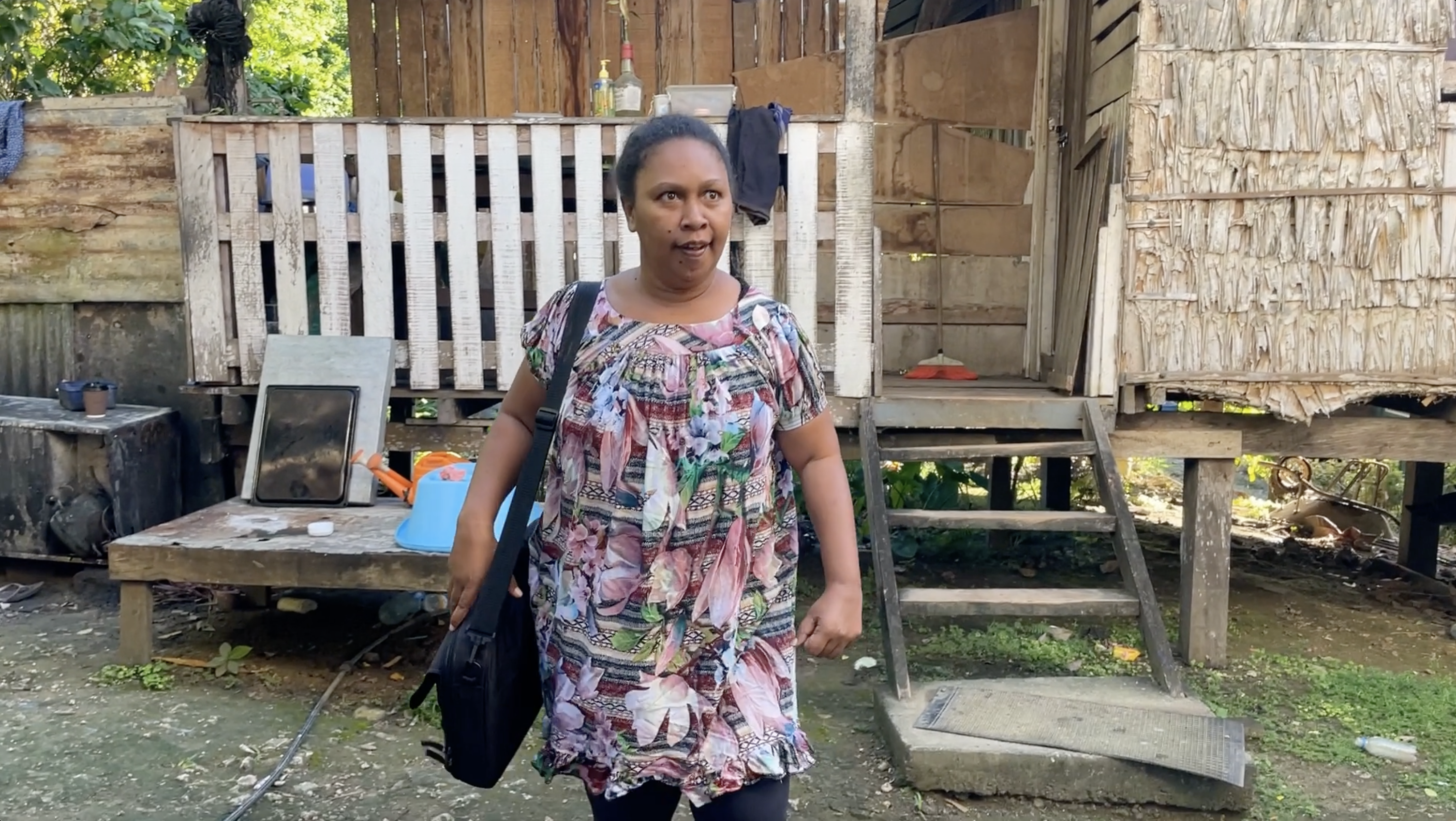Film
Inclusion 101
Students with DeafBlindness Need More Accommodations in Nigeria
Miracle Balogun and Ayodeji Lawal have struggled in mainstream schools because of inaccessible learning materials and few teachers trained in sign language and other ways of communicating with DeafBlind students. DJP fellow Oluwabukolami Omolara Badmus interviews the families of Miracle and Ayodeji along with Solomon Olakunle Okelola, executive director of Lionheart Ability Leaders International Foundation (LALIF). Okelola advocates for a more inclusive approach to education – a key pathway to fully participating in society. *Video includes audio descriptions. *Read along by clicking on the cc button on your YouTube player.
Transcript for Inclusion 101
The video starts with a yellow screen with a title card in a black font that says, “Miracle Balogun is 17 years old. He was born Deaf and with low vision. He has struggled in mainstream schools because of a lack of accessible learning materials and a lack of teachers trained in communicating with DeadBlind students.” Melancholy guitar instrumental plays.
Another title card fades in: “His mother did not wish to appear on camera.” Voiceover of a woman, Miracle Balogun’s mother, says, “His education has been eclectic.” Melancholy guitar instrumental volume decreases.
Cut to an adolescent boy wearing a blue, white, black, and turquoise shirt. He is Miracle Balogun. He is standing in front of a room with a sign that says “LIBRARY” above the door. The building walls are painted pink. He is smiling. He proceeds to hold an index finger up. Voiceover of Balogun’s mother continues, “Most schools, they don’t understand him. I’ll put it that way.”
Cut to Balogun standing with a woman in a black and beige dress. He is wearing black sandals. They are conversing in sign language. There is grass to the right. An adolescent boy steps out of a room behind them, past a black gated door. Voiceover Balogun’s mother continues, “Or, they lack the ability to cope with such a child. I don’t know how to….”
Cut to Balogun drinking from a big bottle of water. He turns his head and looks to the right. Voiceover of his mother continues, “Because he has been in one class for six years. Ever since we put him in the school, they refuse to promote him.”
Cut to Balogun resting his hand on a pink wall with the other hand behind his back. There is a brown bench to the left and windows to the right. Voiceover of his mother says, “I now took it upon myself to start teaching him on my own.”
Cut to a yellow screen with a title card in a black font that says, “Article 24 of the Convention on the Rights of Persons with Disabilities, which Nigeria ratified in 2010, and UN Sustainable Development Goals 4 and 10 guarantee equal opportunities for all learners, including those with disabilities.” Melancholy guitar instrumental volume increases. Another title card fades in, “However, students with DeafBlindness in Nigeria are deprived of these fundamental rights, forcing many to drop out of school or to enroll in residential programs.”
Cut to a man wearing a lime green button-down shirt and black tie. He has a pair of headphones around his neck. He is conversing in sign language with a woman wearing a white shirt with blue, red, and yellow designs. She is wearing a watch. The man is holding the woman’s hands. They are standing in front of a black gate with its pedestrian door open.
Cut to the same man. In this shot, he is wearing a dark blue button-down shirt and a black tie. There is a laptop on a table to the right. He is seated on an orange chair in front of a large cabinet full of notepads and other stationery items. The cabinet and the wall behind him are painted pink. His name and title appear on screen: “Solomon Olakunle Okelola, Executive Director, LALIF [Lionheart Ability Leaders International Foundation]” Okelola says, “The major challenge which individuals with DeadBlindness face in Nigeria arise as a result of their inability to communicate and socialize with people.”
Cut to a close-up of Okelola conversing with a woman in sign language. Cut to Okelola saying, “Teachers in most schools do not know there are ways they can teach and that they can communicate with people with DeafBlindness.” Cut to Okelola conversing with a woman in American Sign Language and English, “International Commission for Persons with…” Cut to Okelola saying, “In the recent survey, we just concluded here in Lagos State, most individuals with DeadBlindness are out of school.” His black belt and black trousers are seen in the frame.
Cut to a close-up of Miracle Balogun with his back leaning against a pink wall. He turns his head to the left. Okelola continues, “And unable to access education. The few of them who manage to attend school cannot easily access learning like their counterparts.”
Cut to a close-up of a person reading Braille from a book. Cut to Okelola saying, “The educational needs of individuals with DeafBlindness are not being provided for by the government in terms of policy-making and by the teachers in terms of implementation of teaching, learning, activity, that can meet the unique need of this individual.” Cut to Miracle Balogun signing to the camera.
Cut to a woman wearing a white and pink dress. She has on a light gray head wrap and gold hoop earrings. She is conversing with someone off-screen. A person off-screen says, “He cannot hear, yes.” To the right is an adolescent boy wearing a green and blue shirt and sitting on a yellow chair. He is Ayodeji Lawal. To the adolescent boy’s right is another man in a white and blue striped shirt. They are seated in front of a black wall.
Cut to a yellow screen with a title card in a black font that says, “Ayodeji Lawal is also DeafBlind. He is out of school after his mother discovered problems with his residential placement.” Synth instrumental starts.
Cut to close up of the same woman wearing a pink and white dress. Her name and title “Balikis Adebola Lawal, Ayodeji’s mother” appears on the screen. Lawal says, “He couldn’t walk, he couldn’t talk until he was three years. He started crawling with his chest. He couldn’t sit on his own. We support him with a pillow, this that, to make him sit up. Problems started at the early stage of his life. [Inaudible] we didn’t notice it on time.”
Cut to Balikis Adebola Lawal with her son Ayodeji Lawal who is drinking from a can. The second man in a blue and white striped shirt remains seated close to Ayodeji Lawal. “Discovered that he’s highly interested in education, so I enrolled him in a normal school, not knowing that he’s supposed to go to special school.
Cut to close up of Balikis Adebola Lawal. She says, “I met a schoolmate, Michael. That one led special education in Oyo. So he was teaching in one of the special schools.” Cut to Lawal and her son. Man in a white and blue striped shirt gets up and picks something off the floor with his other arm around Adodeji Lawal’s neck. Balikis Adebola Lawal continues, “It got into a stage, the owner of the school, the mama that owns the school doesn’t have much time. I just discovered that they didn’t care for them. To my own satisfaction.”
Cut to a yellow screen with a title card in a black font that says, “There are multiple ways to communicate with someone who is DeafBlind.”
Cut to Okelola in front of a pink cabinet and wall. He is wearing a lime green shirt and a black tie. An HP laptop is placed in front of him. Okelola says, “Sometimes sign language basically involves the use of the usual American Sign Language, the only difference being the fact that an individual with DeadBlindness read the sign with the hands instead of with the eyes, at least in the general case.”
Cut to Okelola sitting across from a woman wearing a red dress and gold earrings. Okelola is wearing a white shirt and has a pair of black headphones around his neck. The woman is interpreting something to Okelola in American Sign Language. He is holding her hands. She leans to her right to listen to audio coming from a red and black device. There are few people near them around a table and plastic chairs.
Cut to Okelola, “If an interpreter is signing, I can put my hands on the hand of the interpreter to read what he or she is signing.” Cut to Okelola in the same scene as described above. This time, he is conversing with a woman in a brown and white striped shirt. The woman wearing a red dress leans against a blue table to listen to the device once again. A third woman wearing a white shirt is seated at another table.
Cut to Okelola. He says, “Another way of communication involve the use of big, bold letterings.” Cut to a shot of an alphabet chart on a pink wall. On the left, there is a green wall and a window. Both walls have other items stuck to them. Cut to a close-up of the alphabet chart, focusing on the letters “E”, “F”, and “G” with the words and images of “eggs,” “fish,” and “grapes” near the letters, respectively.
Cut to Okelola, who says, “Individuals with DeadBlindness can also be able to learn Braille.” Cut to an adolescent girl seated on a green chair and reading Braille from a book. She is wearing a black hijab and red shirt with red, black, and white designs. Okelola continues, “There is an application that can convert speech to Braille so that a DeadBlind can make use of it the same way as a person with visual impair.” Cut to a close-up of the adolescent girl reading Braille. Synth instrumental volume increases.
Cut to a yellow screen with a title card in a black font that says, “Individuals with DeafBlindess.” The words fade out downwards. The following phrases fade in and out, respectively: “may be completely Deaf but with residual vision,” “completely blind with residual hearing,” “have low vision and residual hearing,” “or completely Deaf and completely blind.” Other phrases continue to fade in and out, respectively, “To ensure an inclusive education for students who are DeafBlind, the following steps must be taken: Government officials, policymakers, and the disability community must recognize that people who are DeafBlind have distinct needs that are different from those who are blind or Deaf.”
Title cards with transitions continue, “Laws need to be passed to protect individuals with DeafBlindness and ensure equal access to education, employment, medical care, and more.” “More data needs to be collected on the number of people living with DeafBlindness in Nigeria.” “Teachers need to learn how to communicate with students who are DeafBlind. Otherwise, these students could be cut off from one of the key pathways to fully participating in society throughout their lives.”
Fade to black and title cards highlighted in yellow on a black screen that says, “Copyright – @2022 Lionheart Ability Leaders International Foundation. All rights reserved.” Synth music fades out. Screen fades to black. Cut to Copyright- @2022. Lionheart Ability Leaders International Foundation. All rights reserved.

Filmmaker: Oluwabukolami Omolara Badmus
Oluwabukolami Omolara Badmus is a disability rights activist and feminist based in Lagos, Nigeria. She is the project officer and former financial secretary for the Lionheart Ability Leaders International Foundation (LALIF). Badmus is also an educator, teaching at a government/public high school.
Since 2019, part of LALIF’s major organizational focus has been on people with Usher syndrome, a genetic condition that can lead to DeafBlindness. After realizing how little Nigerian citizens know about Usher syndrome and those who live with it, Badmus is now actively involved in educating people, from government officials to educators, about this condition.





